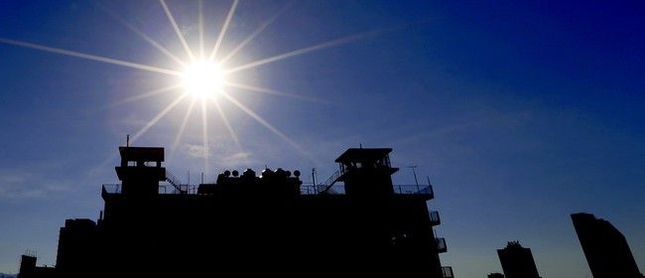What is solar radiation?
It is a combination of electromagnetic radiations emitted by the Sun in the form of energy. Within these radiations they emphasize the ultraviolet rays, of which the UVA rays are those that arrive in its totality to the Earth, and the infrared rays.
Types of radiation
Four different types of solar radiation are known:
- Direct radiation: it is the one that comes directly from the Sun, there is no change in its own direction.
- Diffused radiation: as a result of the absorption caused by the encounter with clouds, mountains, trees and buildings, among others, this radiation goes in all directions.
- Reflected radiation: that which is rebound by the earth’s surface, therefore only those surfaces which are vertical will be reflected.
- Global radiation: is the total radiation as a result of the previous three.
Factors
There are several factors that intervene in the amount of radiation received:
- The ozone layer is responsible for slowing the intensity of ultraviolet rays.
- The higher the altitude, the higher the perceived radiation.
- Due to the latitude, there is more intensity of radiation in the zones that are closer to the equator.
- Reflection is another point to highlight. Some of the UV rays are absorbed and partly reflected. The latter influences a high level of radiation reception. In the snow, for example, they reflect a lot.
- The weather. Be careful with the clouds. When thick clouds are present, the amount of radiation decreases, while with thin clouds this radiation still penetrates.
- The higher the sun, at noon, the more intense the radiation, since it has to cross less amount of atmosphere. So the time of day is another intervening factor.
Effects on the skin
As for health, the skin is the most effected organ. Depending on the type of radiation, there is an effect or other effect on us:
- UVA rays: are the cause of tanning and premature aging of the skin. These rays penetrate to the deepest layer, the dermis.
- UVB rays: are filtered, in part, by the ozone layer and only reach the epidermis, which can cause burns and skin cancers.
- Infrared rays: received in the form of heat, giving a thermal sensation.
- UVC rays: these do not reach the Earth, being retained by the ozone layer, yet they are very dangerous to health because they are the ones with the most energy.
Protecting yourself from the sun is essential. Check Olivita Protect, oral sunscreen with a formula 100% natural to enjoy the sun and take care the skin.






